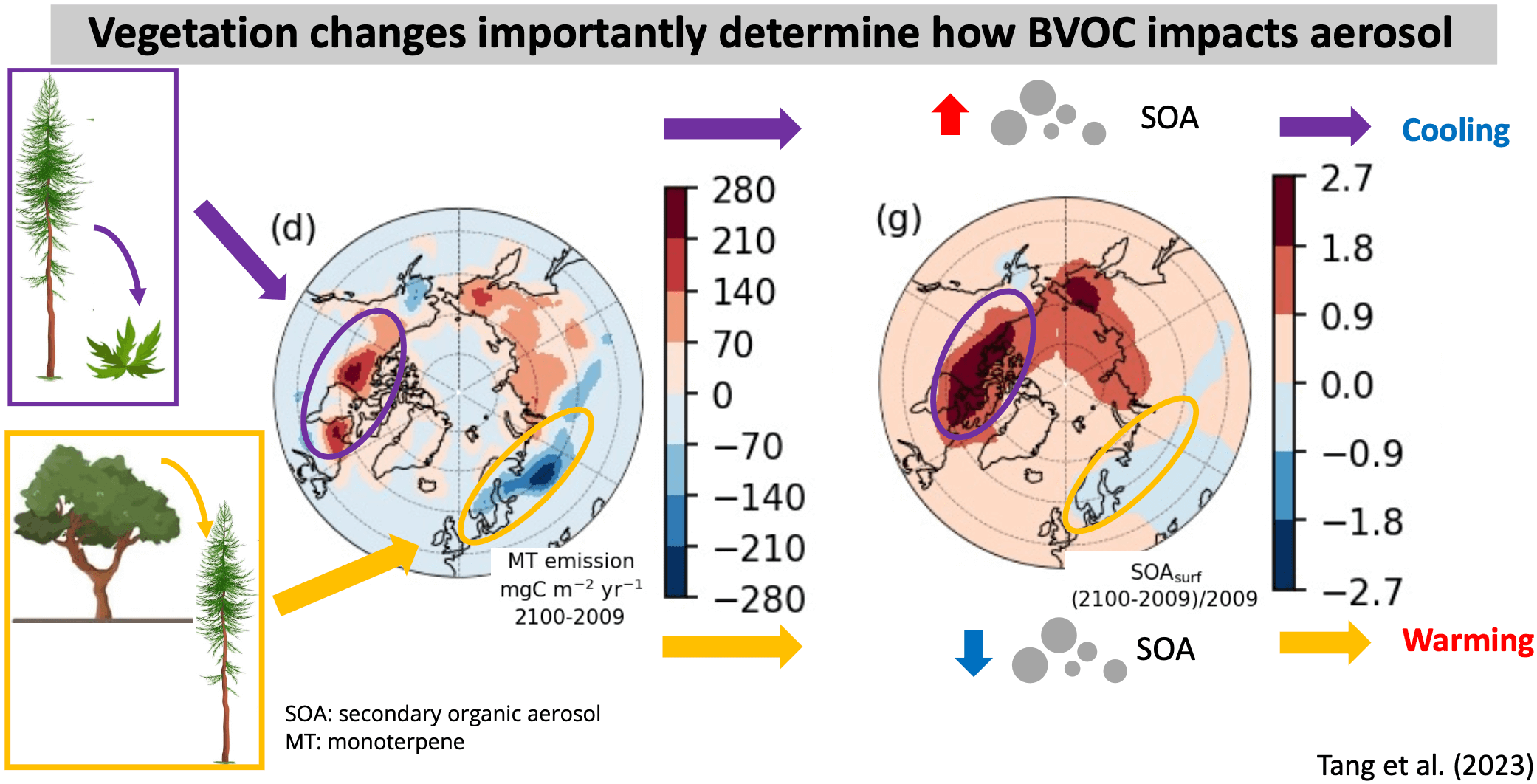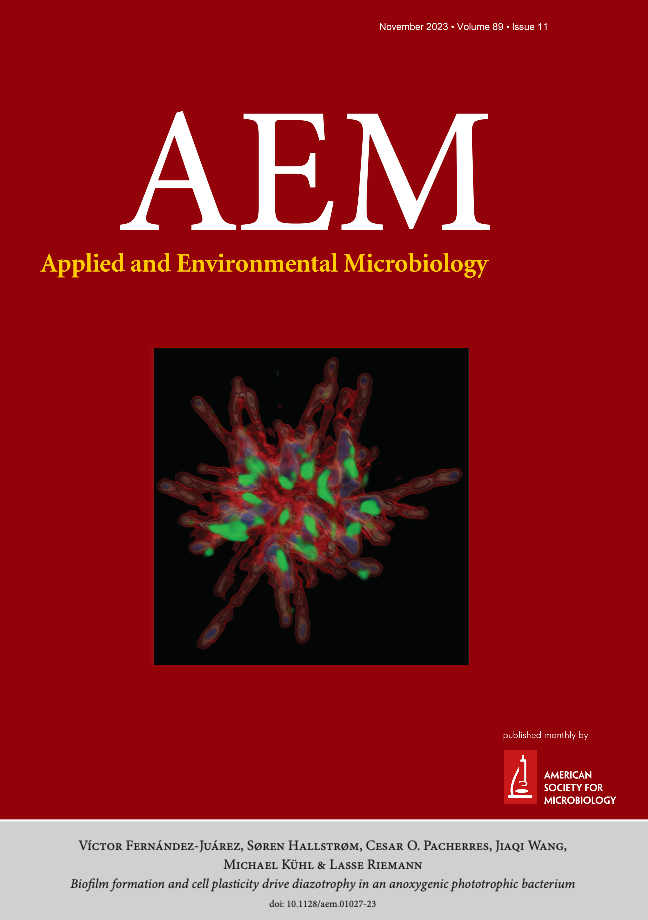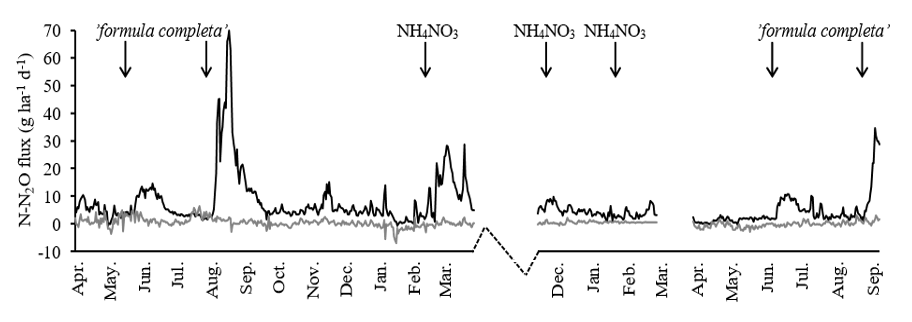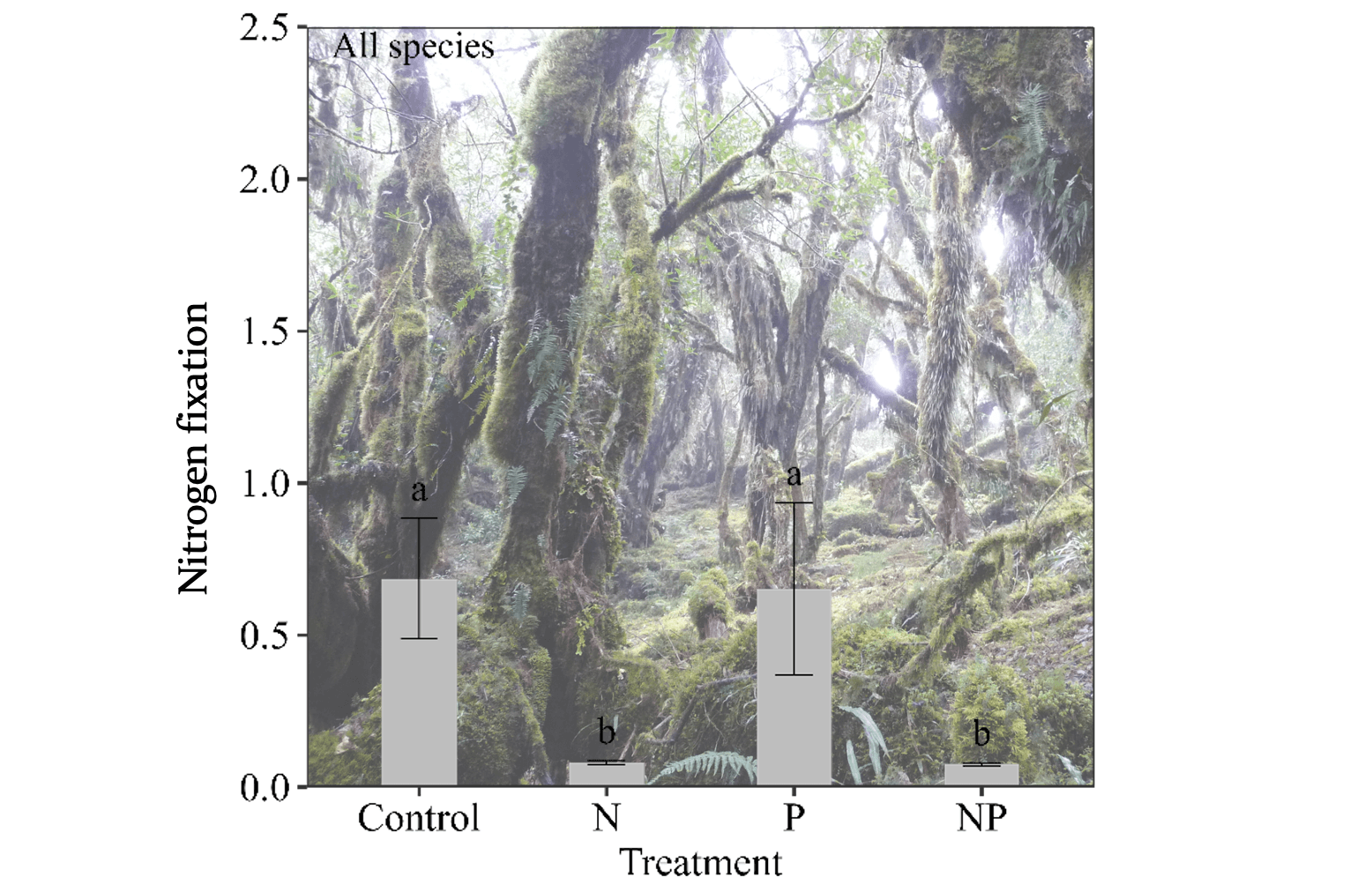2023 Publications Highlights
VOLT center started this year and there have been many exciting activities, collaborations, new people joining, cool instruments arriving and promising data being generated. While most of the new data still needs to be analysed, research is always ongoing, and we have published very interesting papers in 2023.
To highlight only a few of these, here are some publications selected by the VOLT PIs:
High-latitude vegetation changes will determine future plant volatile impacts on atmospheric organic aerosols
(selected by Jing Tang)

This paper, published on npj Climate and Atmospheric Science, shows that warming-induced northward advances of boreal needle-leaved trees into the Arctic can cause climate cooling, while temperate broad-leaved trees replacing needle-leaved trees in the boreal region cause climate warming. These regional warming and cooling feedbacks are caused by different volatiles that plants emit. We quantified this feedback by running a process-based dynamic vegetation model, LPJ-GUESS, and a global atmospheric chemistry model, TM5.
You can read the full text here.
Biofilm formation and cell plasticity drive diazotrophy in an anoxygenic phototrophic bacterium
(selected by Lasse Riemann)
We studied nitrogen fixation in a bacterium isolated from Baltic Sea surface waters. We found that this heterotrophic bacterium could utilize light to support nitrogen fixation. Light and anoxia stimulated growth and nitrogen fixation. Our study reveals the physiological adaptations that underlie nitrogen fixation in an anoxygenic phototroph, emphasizing the significance of biofilm formation for utilizing light and fixing nitrogen under oxic conditions, and underscores the need for deciphering the importance of light for marine non-cyanobacterial diazotrophs.

Picture: Cover page from Applied and Environmental Microbiology showing a cellular rosette-formation with nitrogenase stained in green by immunofluorescence. Fernández-Juárez et al. 2023
You can find the full text here.
Spatial-temporal variations of nitrous oxide emissions in coffee agroforestry systems in Costa Rica
(selected by Anders Priemé)
Coffee is the most intensively traded tropical agricultural commodity. Costa Rican coffee plantations generally receive high nitrogen inputs (up to 350 kg N ha-1 yr-1) through synthetic N fertilizers. This study is the first to provide spatial and high-resolution seasonal trends in N2O emissions from soils for a tropical agricultural system. Annual soil N2O fluxes from a Costa Rican coffee plantation were dominated by bursts over weeks following N-fertilization. Large differences in N2O emissions along a topographic gradient could be explained by nitrate transport downhill and flooded conditions favouring denitrification at the bottom of the slope. We conclude that N2O budgets without including bursts and topographic variation underestimate the annual emission rates from coffee fields.

The figure shows that soil emissions of N2O from a Costa Rican coffee plantation increased dramatically following nitrogen fertilization (NH4NO3 or ‘Formula completa’).
You can find the full text here.
Do Nitrogen and Phosphorus Additions Affect Nitrogen Fixation Associated with Tropical Mosses?
(selected by Kathrin Rousk)
In Clasen et al., we assess how nutrient availability affects nitrogen fixation in 3 mosses collected in a tropical cloud forest in Peru. Tropical cloud forests harbor a diverse community of mosses and we demonstrate that colonization by nitrogen (N) fixing cyanobacteria is a common feature across moss species. In this study, we also show that nitrogen addition inhibits nitrogen fixation in all mosses, whereas phosphorus additions can increase nitrogen fixation – but this is dependent on the moss host.

You can read the full text here.
As a bonus, Kathrin has also chosen to highlight "A research agenda for nonvascular photoautotrophs under climate change", which is a collaborative effort to bring bryophytes to the attention of the research community, and also to suggest a future research agenda considering climate change. Enjoy the full text and nice images here.
Soil uptake of VOCs exceeds production when VOCs are readily available
(selected by Riikka Rinnan)
We studied VOC exchange in soils collected from a Danish beech forest and a heather-dominated heath. The soils released distinct VOC blends, but when VOCs were introduced to the soil environment, soils shifted from net release to net uptake of these compounds. We show that VOC uptake rates rise with increasing VOC concentrations and that uptake rates increase with temperature. This study opens up many new research questions for VOLT within soil biogeochemistry of VOCs.
You can read the full text here.
